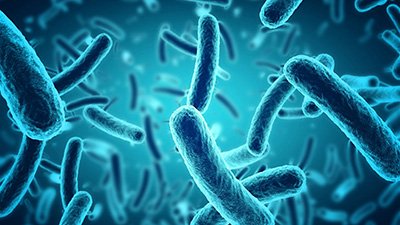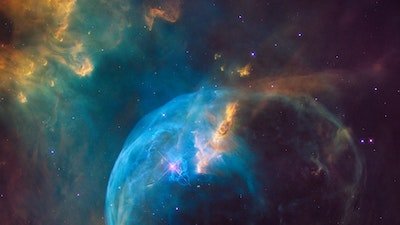The “Right Hand” of Evolution
“Potentially prebiotic conditions” permit production of right-handed carbs.
News Source
- ScienceDaily: “Scientists Discover New Clue to Chemical Origins of Life”
“The desire to know where we come from permeates our psyche and is part of what makes us Human. Obviously for Life to have begun all the molecules needed to create Life must have been present; however, our understanding how these molecules arose is incomplete. Especially perplexing is how did carbohydrates, which are needed to mediate a host of biological processes and are present in DNA and RNA, arise in the first instance? And why are these carbohydrates all of the same ‘right-handed’ form, when amino acids are of the opposite ‘left-handed’ form?”1 So reads the University of York web announcement of Dr. Paul Clarke’s publication of a paper he believes shows how the building blocks of life fell into place in the prebiotic world.
“For life to have evolved,” Clarke says, “you have to have a moment when non-living things become living -- everything up to that point is chemistry.”
“For life to have evolved,” Clarke says, “you have to have a moment when non-living things become living -- everything up to that point is chemistry. We are trying to understand the chemical origins of life. One of the interesting questions is where carbohydrates come from because they are the building blocks of DNA and RNA. What we have achieved is the first step on that pathway to show how simple sugars -- threose and erythrose -- originated. We generated these sugars from a very simple set of materials that most scientists believe were around at the time that life began.”
Last week we described research involving threose nucleic acid (TNA)2 as a potentially simpler nucleic acid for the leap to the most primitive genetic code. Threose is a four-carbon sugar; therefore, the odds of threose forming spontaneously from two two-carbon molecules seem greater than the odds of spontaneous production of the five-carbon ribose used in RNA. However, the prebiotic production of life’s chemical building blocks is hampered by the need to produce the mirror image form of molecules demanded by living systems. Biomolecules can typically exist in chiral (mirror image) forms. Only one of the mirror image molecular forms—left-handed amino acids and right-handed carbohydrates, for instance—function in living systems. But when these biomolecules are produced outside of living systems, both mirrored forms are produced.
Clarke’s group found that they could use left-handed amino acids to catalyze the synthesis of predominantly right-handed sugar molecules. They believe their experimental conditions mimicked those in the prebiotic world and therefore think similar processes could have produced the right-handed form of sugars like threose and erythrose, the chiral forms that could be the raw materials for a primitive life form.
There are several problems with Clarke’s molecules-to-life scenario. First of all, he had to start with left-handed amino acids. Since the shape of an enzyme creates a shaped space in which a chemical reaction takes place, it is not surprising that left-handed enzymatically active molecules produced the proper chiral form. But where does he suppose the prebiotic world got its stock of left-handed amino acids? For that matter, like the old Miller–Urey experiment, the active control of experimental conditions demands a great deal of intelligent input and therefore in no way imitates random processes postulated to produce an evolutionary spark of life. Finally, as we discussed last week, even if random chemistry did produce all the building blocks of life and assemble them into primitive information-containing molecules like RNA and DNA, the molecules would contain no information. Chemicals could certainly hold a coded message that could be copied, but without God to provide the original information and a mechanism in place to translate and understand and act on that coded message, the chiral chemical would spell nothing but chaotic nonsense.
Furthermore, the university website asserts “Obviously for Life to have begun all the molecules needed to create Life must have been present.” The Bible tells us, however, that God in the beginning created ex nihilo, from nothing. God needed no organic raw materials. And if we wish “to know where we come from,” the God who created us and loves us has given us His own eyewitness account. That eyewitness account does not violate any observations of science.
Biological observations tell us life only comes from life. And information must come from a source of information. The living Creator God made all physical matter and all living things in the beginning, about 6,000 years ago. And He created the genetic code to enable all kinds of living things to reproduce and vary within their created kinds. His eyewitness account is in Genesis.
For More Information: Get Answers
Remember, if you see a news story that might merit some attention, let us know about it! (Note: if the story originates from the Associated Press, FOX News, MSNBC, the New York Times, or another major national media outlet, we will most likely have already heard about it.) And thanks to all of our readers who have submitted great news tips to us. If you didn’t catch all the latest News to Know, why not take a look to see what you’ve missed?
(Please note that links will take you directly to the source. Answers in Genesis is not responsible for content on the websites to which we refer. For more information, please see our Privacy Policy.)
Recommended Resources

Answers in Genesis is an apologetics ministry, dedicated to helping Christians defend their faith and proclaim the good news of Jesus Christ.
- Customer Service 800.778.3390
- © 2024 Answers in Genesis







